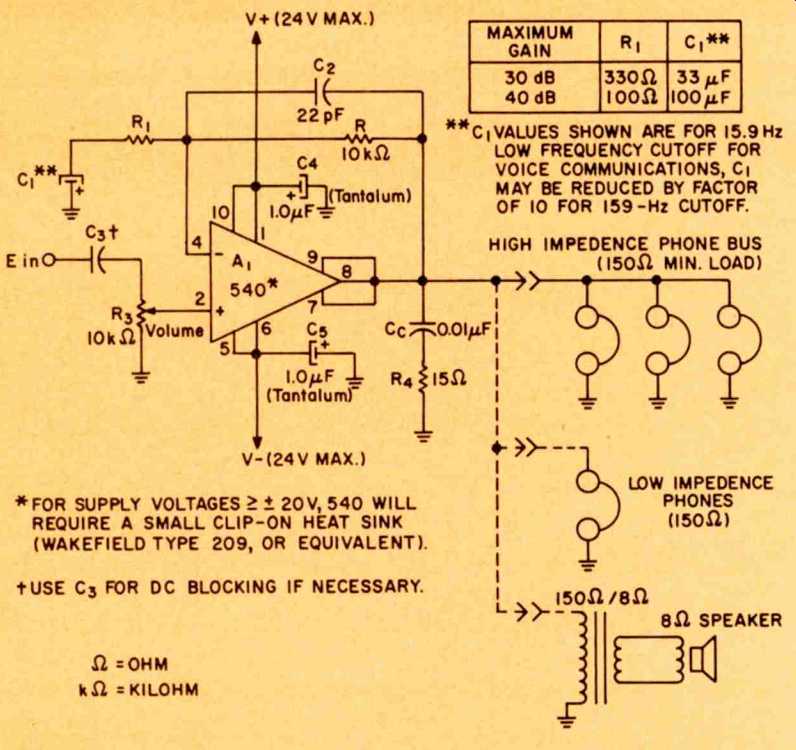
by Walter G. Jung [Adapted from "Audio IC Op-Amp Applications" (Cat.
No. 21558) by Walter G. Jung; ©1978 by Howard W. Sams & Co., Inc. See Audio's
book ad at the beginning of the classified section.]
Although IC opamps are extremely useful in audio applications because of their high gain, small size, low cost, and general versatility, most of them are not capable of delivering more than a few milliwatts of power to a load. The standard ±10 V output swing into the rated 2-kilohm load represents only about 25 mW of power, which is quite modest. Audio applications that require greater power often demand voltages and currents far in excess of what the standard op amp can deliver. For some of these applications, specialized IC types can be used, but, in general, some means of increasing both the output voltage swing and the output current capability is necessary in order to take full advantage of the high-gain properties of IC op amps. Here we will examine a power application for a simple one-watt headphone driver.
Virtually any standard op amp can be used to drive a single set of high-impedance (2 kilohm) headphones at a 25 mW level.
All that is necessary is to select a suit able configuration and provide the required gain. The IC type can be chosen almost from convenience or personal preference, since most types can deliver 25 mW into 2 kilohms.
However, when a number of high impedance headphones (or a smaller number of low-impedance types) are to be driven, the power requirements exceed the output capabilities of the standard op-amp types.

Fig. 1--One-watt headphone driver using the 540 opamp.
One type that is ideally suited for this application is the 540 power driver which has a 150 mA, 1.0 W output capability. A circuit incorporating the 543 for this application is shown in Fig. 1. In this circuit, the 540 is operated as a variable-gain amplifier with maximum gains of either 30 or 40 dB, selected by the user by choosing the appropriate components from the tabulated values given in Fig. 1. The output level is adjusted with volume control R3, which controls the input level to the 540.
Due to the wide power-supply operating capability of the 540, there is a wide range of maximum output levels available from the circuit in Fig. 1.
With ±24 V supplies, for example, the 540 will deliver 1.0 W into a 150-ohm load, such as might be represented by a set of 150-ohm headphones, a parallel network of high-impedance head phones, or a transformer-driven 8-ohm speaker. This circuit has a variety of uses such as a multiple-headphone intercom system, high-fidelity headphones, studio cueing amplifier, etc.
The total harmonic distortion (THD) is less than 1.0 percent, even at maxi mum output. At lower output levels and also with load impedances higher than 150 ohms, the distortion reduces proportionally. If the 540 is operated at supply voltages of ±20 V or above, a clip-on heat sink, such as the Wake field Type 209 (or equivalent), should be used. Also, since the 540 is a wide-bandwidth device, a compact layout with bypassed power-supply leads is recommended. Other possible alternatives for a headphone driver are the 759, 791, or 5534 devices.
Also see: Headphones around the house (May 1974)
(Source: Audio magazine, May 1979)
= = = =